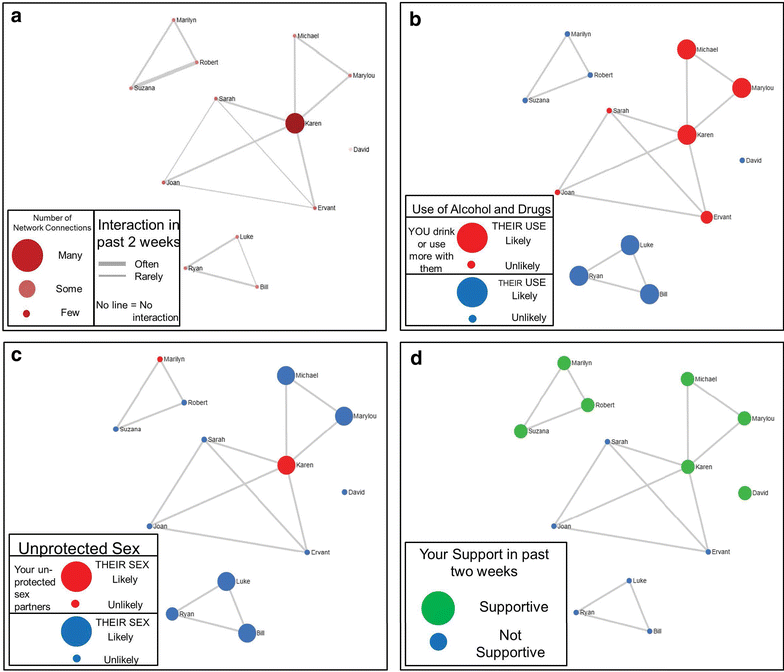Feasibility of a computer-assisted social network motivational interviewing intervention for substance use and HIV risk behaviors for housing first residents
- PMID: 27604543
- PMCID: PMC5015231
- DOI: 10.1186/s13722-016-0061-x
Feasibility of a computer-assisted social network motivational interviewing intervention for substance use and HIV risk behaviors for housing first residents
Abstract
Background: Social networks play positive and negative roles in the lives of homeless people influencing their alcohol and/or other drug (AOD) and HIV risk behaviors.
Methods: We developed a four-session computer-assisted social network motivational interviewing intervention for homeless adults transitioning into housing. We examined the acceptability of the intervention among staff and residents at an organization that provides permanent supportive housing through iterative rounds of beta testing. Staff were 3 men and 3 women who were residential support staff (i.e., case managers and administrators). Residents were 8 men (7 African American, 1 Hispanic) and 3 women (2 African American, 1 Hispanic) who had histories of AOD and HIV risk behaviors. We conducted a focus group with staff who gave input on how to improve the delivery of the intervention to enhance understanding and receptivity among new residents. We conducted semi-structured qualitative interviews and collected self-report satisfaction data from residents.
Results: Three themes emerged over the course of the resident interviews. Residents reported that the intervention was helpful in discussing their social network, that seeing the visualizations was more impactful than just talking about their network, and that the intervention prompted thoughts about changing their AOD use and HIV risk networks.
Conclusions: This study is the first of its kind that has developed, with input from Housing First staff and residents, a motivational interviewing intervention that targets both the structure and composition of one's social network. These results suggest that providing visual network feedback with a guided motivational interviewing discussion is a promising approach to supporting network change. ClinicalTrials.gov Identifier NCT02140359.
Keywords: Alcohol and other drug use; Data visualization; EgoWeb; HIV risk behaviors; Homelessness; Housing First; Motivational interviewing; Social network intervention.
Figures

References
MeSH terms
Associated data
Grants and funding
LinkOut - more resources
Full Text Sources
Other Literature Sources
Medical

